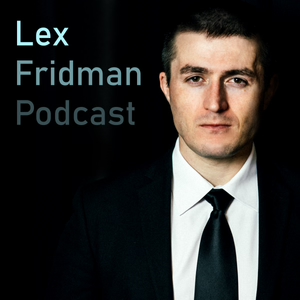
The sand pile model
07/10/23 • 26 min
1 Listener
When a system fails, how do you think about cause and effect? One way to consider this in complex systems is to imagine a pile of sand, and dropping one grain of sand at a time in random positions onto the pile. As time passes, you'll start to form little hills. Eventually, a grain of sand will hit one of these hills, and you get an avalanche.
Do you believe that the avalanche was caused by the last grain of sand falling onto it, or do you believe that the avalanche happened due to the shape of the hill itself? To explore this sand pile model, we are joined today by Neil Johnson, Professor of Physics and Head of the Dynamic Online Networks Lab at George Washington University.
Connect:
- Simplifying Complexity on Twitter
- Sean Brady on Twitter
- Sean Brady on LinkedIn
- Brady Heywood website
This show is produced in collaboration with Wavelength Creative. Visit wavelengthcreative.com for more information.
When a system fails, how do you think about cause and effect? One way to consider this in complex systems is to imagine a pile of sand, and dropping one grain of sand at a time in random positions onto the pile. As time passes, you'll start to form little hills. Eventually, a grain of sand will hit one of these hills, and you get an avalanche.
Do you believe that the avalanche was caused by the last grain of sand falling onto it, or do you believe that the avalanche happened due to the shape of the hill itself? To explore this sand pile model, we are joined today by Neil Johnson, Professor of Physics and Head of the Dynamic Online Networks Lab at George Washington University.
Connect:
- Simplifying Complexity on Twitter
- Sean Brady on Twitter
- Sean Brady on LinkedIn
- Brady Heywood website
This show is produced in collaboration with Wavelength Creative. Visit wavelengthcreative.com for more information.
Previous Episode

Big Ideas: Information
When most of us think about information, we think of it as something we can possess or ‘know’. But what if it’s so much more than that?
In this episode, we’re joined by Sara Walker, Deputy Director of the Beyond Center for Fundamental Concepts in Science, Associate Professor in Earth and Space Exploration and Complex Adaptive Systems at Arizona State University, and External Faculty at the Santa Fe Institute. Sara is going to examine information and the critical role it plays in complex systems.
Connect:
- Simplifying Complexity on Twitter
- Sean Brady on Twitter
- Sean Brady on LinkedIn
- Brady Heywood website
This show is produced in collaboration with Wavelength Creative. Visit wavelengthcreative.com for more information.
Next Episode

How does a poor kid get ahead? Part 1
If you're a child born into a poor family in the United States, what are the most important factors in your life that will influence whether or not you're able to rise out of poverty?
To answer that question, we're joined again by Matthew Jackson, William D. Eberle Professor of Economics at Stanford University, and External Faculty at the Santa Fe Institute.
This is part one of a two-part series, and in this episode, Matthew is going to introduce us to a study he was involved in that looked at the data of 21 billion friendships in the US that asked the question: what is it really that allows a child to get ahead?
Connect:
- Simplifying Complexity on Twitter
- Sean Brady on Twitter
- Sean Brady on LinkedIn
- Brady Heywood website
This show is produced in collaboration with Wavelength Creative. Visit wavelengthcreative.com for more information.
If you like this episode you’ll love
Episode Comments
Generate a badge
Get a badge for your website that links back to this episode
<a href="https://goodpods.com/podcasts/simplifying-complexity-246336/the-sand-pile-model-31502939"> <img src="https://storage.googleapis.com/goodpods-images-bucket/badges/generic-badge-1.svg" alt="listen to the sand pile model on goodpods" style="width: 225px" /> </a>
Copy




